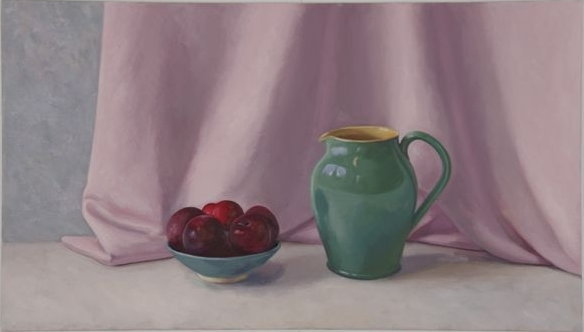8 - 26 March 2007
about the exhibition
Painter Crispin Akerman has earned a significant reputation for the elegant simplicity and fine balance he achieves within his favoured genre, the still life. This style of painting did not emerge as a subject in its own right until the early 17th century, where it had its greatest currency in Flanders and Holland. Often collections of objects were arranged to display a painter’s virtuosity or put together in association with each other to have a significance beyond their individual appearance. In making work for this exhibition, Crispin investigated the use of established ratios or proportions within a composition. Apart from the widely known “golden ratio”, he became interested in the ratios and proportions proposed by Alberti in his treatise on architecture written in 1436. By dividing the string of a musical instrument into intervals pleasing to the ear, Alberti discovered ratios that he applied directly to the plastic arts. The proportions prescribed in this manner produced a peculiarly calm and serene aesthetic, and when added to Crispin’s established visual vocabulary achieve a sure formal and thematic unity within the composition. Ceramics, jugs, bottles, drapery, fruit and flowers arranged in austere interior settings echo Dutch 17th century painting, but also radiate a modern hyper-realism not often associated with still-life painting. This is Crispin’s seventh solo exhibition at Beaver Galleries.
Born in England, Crispin Akerman came to Australia with his family in 1966. He spent many years in the music industry but left that in 1989 to pursue his lifelong interest in the visual arts. He received a Bachelor of Visual Arts from the Canberra School of Art in 1992 and, since then, has focused on his art practice, achieving significant recognition. Crispin’s first ever solo show was held at Beaver Galleries in 1995 and his popularity has gone from strength to strength with each exhibition. Crispin’s work is represented in the collections of Artbank, Parliament House, BHP Billiton and the Australian National University.

















